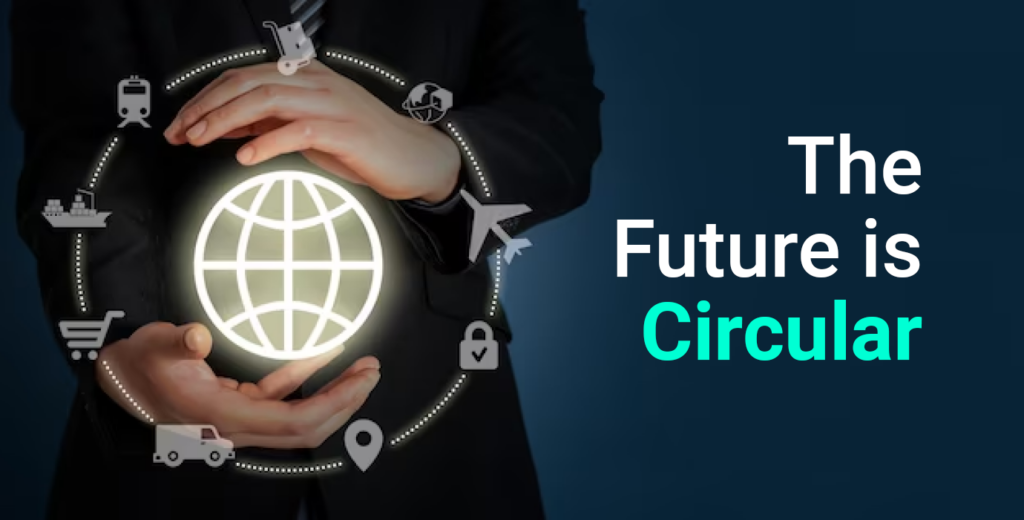Traditional linear supply chain strategies have given way to modern variations that offer flexibility, optimized operational flows, and a smooth delivery experience with reduced costs – a circular supply chain. Manufacturers, businesses, and all organizations have needed to develop groundbreaking solutions to maintain the production of high-quality goods due to rising costs and limited access to raw materials in recent years and a circular supply chain can help them achieve those goals.
A modern circular supply chain has benefited early adopters through a holistic looping process as they lower production and shipping costs, optimize resource and operational efficiency whilst driving down the business’s environmental impact through reduced emissions and material usage.
How Does A Circular Supply Chain Differ?
Most ‘traditional’ supply chains that are still utilized by the vast majority of organizations could be considered linear supply chain models—the supply chain flows along a direct path from raw materials, to production, to the end consumer, and finally to disposal—usually with the products ending up at a landfill.
Alarmingly, only 15 – 20% of the 2.12 billion tons of waste that is produced globally each year is recycled according to the World Economic Forum. When waste and customer returns are reused to create new or refurbished products it is referred to as a circular supply chain.
A circular supply chain aims to drastically reduce the amount of raw materials used and waste that is discarded compared to a linear supply chain. Due to this material reuse, the circular supply chain, in contrast to the conventional linear supply chain model, moves continuously rather than coming to an end at the end consumer.
Recently, businesses have transitioned toward a circular supply chain model as sustainability has become a significant decisive factor for both shareholders and consumers.
Circular supply chain models may come in many different forms yet, they all share the same driving philosophy—reducing waste and minimizing environmental impact. However, there are a handful of reasons why global organizations are making slow progress toward fully implementing a successful circular supply chain system.
Circular Supply Chain & Waste Collection
Waste collection systems are a crucial component of circular supply chain strategies and serve several essential purposes. However, they simultaneously create a major problem when it comes to establishing a circular supply chain solution as the waste collection system needs to cover an expansive area.
This makes it easier to collect returned products from the end consumer and makes a delivery to the recycling, refurbishing, or repair facility much quicker. At the same time, it’s also challenging for companies to ensure that the waste collection system is aggregating a cost-effective amount of materials to make the circular supply chain commercially viable.
Leading organizations today are facilitating a circular supply chain by directly addressing these delinquencies in existing waste collection systems. Businesses that are focused on servicing e-commerce brands are uniquely leveraging seamless global returns solutions through enhanced carrier networks and intelligent technologies that collect products back from the end consumer—no matter where they are, and have their products or waste returned to one of our global warehouses, or forwarded to a manufacturing or recycling facility depending on their business needs after aggregating a sufficient, cost-effective amount.
Similarly, software that deploys Application Programming Interface (API) integration empowers another layer of visibility to a circular supply chain not found elsewhere. Thanks to API, businesses can integrate their warehouse, recycling, and manufacturing facilities management system into this portal to create a more thorough detailed overview of how their returns are being utilized that sits alongside metrics from across the entirety of their supply chain operations. Businesses are then empowered to distill data from across all touchpoints of their supply chain to analyze trends and identify areas for optimization thanks to the technology’s comprehensive reporting suite.
Increasing Technology Accessibility and Availability
An additional obstacle that prevents organizations from moving closer toward circularity is a lack of supporting tech infrastructure, especially in remote areas. Supporting tech infrastructure is critical to circularity’s success as it facilitates supply chain visibility and improves transportation via route optimization.
Presently, delivery providers are unable to optimize their delivery routes in many rural areas due to the lack of real-time data availability meaning that businesses cannot reduce the time it takes to deliver or pick up returns thus impacting the amount of transportation-related CO2 emissions generated on the road.
The advanced circular supply chain solutions of today enable a certain level of route optimization to the extent that businesses can strategically split their inventory based on the data from these systems to be stored in a location that’s closer to their consumers. Furthermore, shortly, leading solution providers will seek to incorporate advanced routing algorithms into their technology that will automatically define where returned goods should be moved to based on efficiency—the closest warehouse or processing facility, and product materials.
Satisfying Regulatory Reporting Requirements
Today’s powerful logistics technology acts as an integrated bridge between all components of the supply chain. Data is consolidated across every touchpoint of the supply chain from the manufacturer to warehousing, last-mile delivery, and returns. Advanced visibility portals create a unified data experience thanks to a comprehensive reporting suite that empowers brands to quickly distill trends and make optimizations seamlessly by leveraging the technology’s intelligent automation rules engine.
Technology partners are helping to address emissions reporting deficiencies by creating a unified emissions reporting tool within their portals. These advanced features will enable e-commerce businesses to track CO2 emissions across the transportation and warehousing stages of their supply chain.
Circular supply chains today remain rare, elusive, and difficult for businesses to implement for many of these reasons. However, by partnering with the right technology solution providers, organizations with both global and local reach can serve as leaders in their industries and communities and pave the way forward with greater efficiency and sustainability in mind to not only achieve business and financial goals, but environmental goals as well.
About The Author
 Josh Tsui is the CEO of Floship, a leading global circular supply chain ecosystem solutions provider. Floship’s global circular supply chain ecosystem solutions cover all aspects of the global supply chain, ensuring minimal operation effort for e-commerce businesses while exceeding their expectations, allowing business owners to concentrate on driving growth and investment flexibility while gaining peace of mind.
Josh Tsui is the CEO of Floship, a leading global circular supply chain ecosystem solutions provider. Floship’s global circular supply chain ecosystem solutions cover all aspects of the global supply chain, ensuring minimal operation effort for e-commerce businesses while exceeding their expectations, allowing business owners to concentrate on driving growth and investment flexibility while gaining peace of mind.
For more information, click here.

Ready To Upgrade Your Logistic Solution?
Speak to Floship ecommerce logistic consultant about improving your global support chain today




